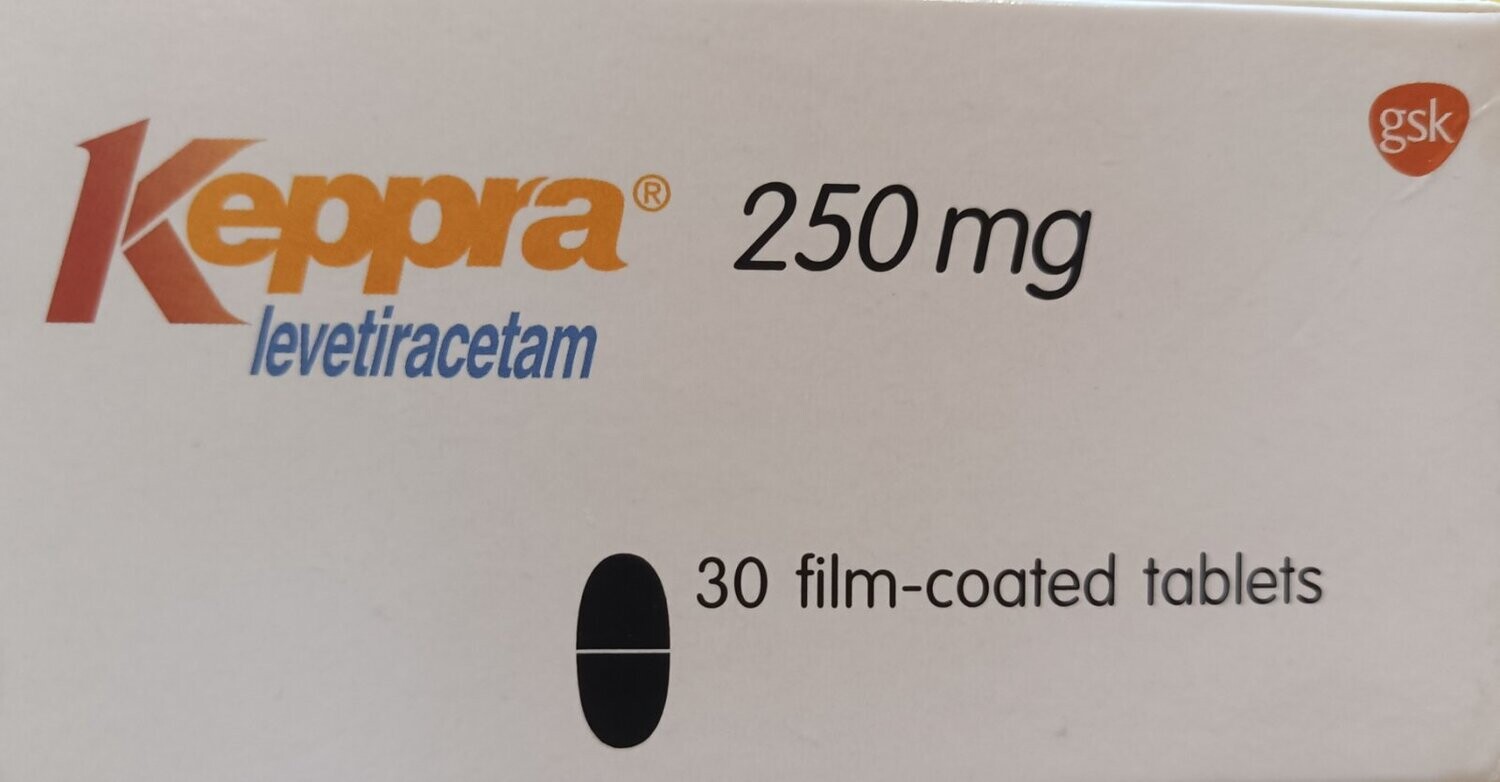Keppra 250mg- Levetiracetam GSK အတက်ရောဂါများအတွက်ဆေး
Home/Store/BCX-i Pharmacy ဆေးနှင့်ဆေးပစ္စည်များ/ဆေးအမျိုးအမည်များ Products of Medicine/Anticonvulsant အတက်ရောဂါများအတွက်ဆေးများ
Ks71,000.00
Selling by
In stock
Product Details
Brand: GSK Belgium
အတက်ရောဂါများအတွက် သီးသန့်ဆေးဖြစ်ပြီး ဆရာဝန် ညွှန်ကြားချက်ဖြင့်သာသောက်ရန်
|
Oral
Partial seizures with or without secondary generalisation
Adult: Monotherapy: Recommended starting dose is 250 mg bid, increased to an initial therapeutic dose of 500 mg bid after 2 wk. May further increase by 250 mg bid every 2 wk depending upon response. Max: 1,500 mg bid.
Oral Adjunct in seizures
Adult: For partial seizures w/ or w/o secondary generalisation; myoclonic seizures (w/ juvenile myoclonic epilepsy); primary generalised tonic-clonic seizures (w/ idiopathic generalised epilepsy): Initially, 500 mg bid on the 1st day. Adjust dose in increments or decrements of 500 mg bid at 2-4 wk intervals. Max: 1,500 mg bid.
Child: 1 to <6 mth Initially, 14 mg/kg daily, may adjust in increments of 14 mg/kg at 2-wk intervals. Max: 42 mg/kg daily; ≥6 mth <50 kg: Initially, 20 mg/kg daily, may adjust in increments of 20 mg/kg at 2-wk intervals. Max: 60 mg/kg daily. |
||||||||
|
Renal Impairment
ESRD patients undergoing dialysis: Loading dose of 750 mg, followed by 500-1,000 mg once daily; supplemental dose of 250-500 mg after dialysis.
|
||||||||
|
Hepatic Impairment
Severe: Reduce dose by 50%.
|
||||||||
|
Administration
May be taken with or without food. Oral soln may be taken directly or diluted in a glass of water.
|
||||||||
|
Reconstitution
Intravenous:
Dilute dose in 100 mL of suitable diluent (e.g. NaCl 0.9%, lactated Ringer's or dextrose 5% inj). |
||||||||
|
Special Precautions
Avoid abrupt withdrawal. Renal and/or severe hepatic impairment. Pregnancy and lactation.
|
||||||||
|
Adverse Reactions
Somnolence, weakness, dizziness, anorexia, diarrhoea, dyspepsia, nausea, wt gain or loss, myalgia, ataxia, headache, amnesia, depression, emotional lability, insomnia, nervousness, tremor, vertigo, diplopia, rash; paraesthesia, pancreatitis, hepatic failure, hepatitis, common colds, upper resp tract infections, alopecia, blood dyscrasias (e.g. neutropenia, pancytopenia, thrombocytopenia). Rarely, erythema multiforme, Stevens-Johnson syndrome, toxic epidermal necrolysis.
|
||||||||
|
IV/Parenteral/PO: C
|
||||||||
|
Patient Counseling Information
This drug may cause somnolence or other CNS related symptoms, if affected, do not drive or operate machinery.
|
||||||||
|
Monitoring Parameters
Monitor for emergence or worsening of depression, suicidal thoughts or behaviour and/or unusual changes in mood or behaviour.
|
||||||||
|
Overdosage
Symptoms: Somnolence, agitation, aggression, depressed level of consciousness, resp depression, coma. Management: Symptomatic and supportive treatment. Empty the stomach by gastric lavage or induction of emesis. May perform haemodialysis.
|
||||||||
|
Drug Interactions
Increased or prolonged blood methotrexate concentration to potentially toxic levels.
|
||||||||
|
Action
Description: The exact mechanism of anticonvulsant effect is unknown. Studies show that levetiracetam affects intraneuronal Ca levels by partial inhibition of N-type Ca currents and by reducing the release of Ca from intraneuronal stores; facilitates GABA-ergic inhibitory transmission through displacement of negative modulators; reduces delayed rectifier K current; and/or binds to synaptic proteins which modulate neurotransmitter release.
Pharmacokinetics: Absorption: Rapidly absorbed from GI tract. Bioavailability: Approx 100%. Time to peak plasma concentration: W/in 1.3 hr. Distribution: Distributed in breast milk. Volume of distribution: 0.5-0.7 L/kg. Plasma protein binding: <10%. Metabolism: Not extensively metabolised; 24% of the dose is metabolised by enzymatic hydrolysis into inactive metabolites. Excretion: Via urine (approx 95%) both as unchanged drug and metabolites; faeces (0.3%). Plasma elimination half-life: Approx 7 hr. |
Keppra 250mg- Levetiracetam GSK အတက်ရောဂါများအတွက်ဆေး
Display prices in:MMK
